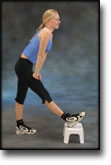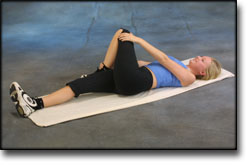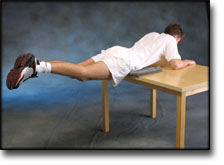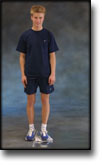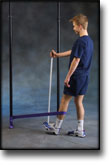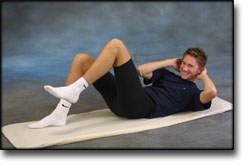|
Effectiveness of active physical training as treatment for long-standing adductor-related groin pain in athletes: randomised trial.
Holmich P, Uhrskou P, Ulnits L, Kanstrup IL, Nielsen MB, Bjerg AM, Krogsgaard K. Lancet 1999 Feb 6;353(9151):439-43.
BACKGROUND.
Groin pain is common among athletes. A major cause of long-standing problems is adductor-related groin pain. The purpose of this randomised clinical trial was to compare an active training programme (AT) with a physiotherapy treatment without active training (PT) in the treatment of adductor-related groin pain in athletes.
METHODS.
68 athletes with long-standing (median 40 weeks) adductor-related groin pain–after examination according to a standardised protocol–were randomly assigned to AT or PT. The treatment period was 8-12 weeks. 4 months after the end of treatment a standardised examination was done. The examining physician was unaware of the treatment allocation. The ultimate outcome measure was full return to sports at the same level without groin pain. Analyses were by intention to treat.
FINDINGS.
23 patients in the AT group and four in the PT group returned to sports without groin pain (odds ratio, multiple-logistic-regression analysis, 12.7 [95% CI 3.4-47.2]). The subjective global assessments of the effect of the treatments showed a significant (p=0.006) linear trend towards a better effect in the AT group. A per-protocol analysis did not show appreciably different results.
INTERPRETATION.
AT with a programme aimed at improving strength and coordination of the muscles acting on the pelvis, in particular the adductor muscles, is very effective in the treatment of athletes with long-standing adductor-related groin pain. The potential preventive value of a short programme based upon the principles of AT should be assessed in future, randomised, clinical trials.
|


